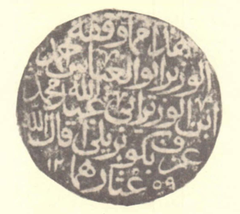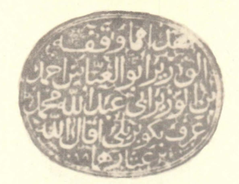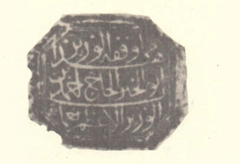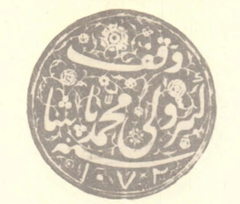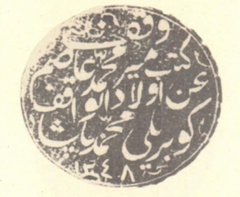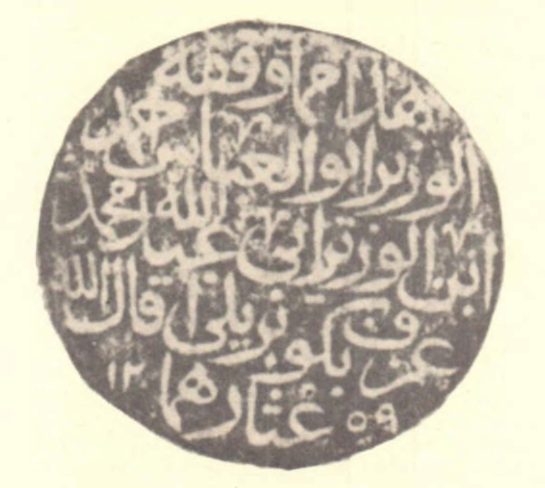
Köprülü Library Visiting Hours, Tickets, and Istanbul Historical Sites Guide
Date: 15/06/2025
Introduction
The Köprülü Library (Köprülü Kütüphanesi) is a landmark of Ottoman intellectual life and a vital stop among Istanbul’s historical sites. Established in 1678 in the city’s historic Eminönü district, it was the first purpose-built, publicly accessible library in the Middle East, breaking from the tradition of libraries attached solely to mosques or madrasas (everything.explained.today; Wikipedia). The Köprülü Library not only democratized knowledge but also set architectural and institutional precedents for future libraries in the Ottoman Empire and beyond.
This guide provides a detailed overview of the Köprülü Library’s history, collections, architecture, visiting information, nearby attractions, and tips for making the most of your visit to one of Istanbul’s most treasured cultural landmarks.
Table of Contents
- Origins and Foundation of the Köprülü Library
- Pioneering Role in Ottoman and Middle Eastern Library Tradition
- Architectural and Institutional Innovations
- Collections: Manuscripts and Printed Works
- Visiting Information: Hours, Tickets, and Accessibility
- Travel Tips and Nearby Attractions
- Guided Tours and Visitor Experience
- Digital Access and Preservation
- Frequently Asked Questions (FAQ)
- Visual Media and Digital Resources
- Conclusion: Köprülü Library in Istanbul’s Cultural Heritage
- Sources and Further Reading
Origins and Foundation of the Köprülü Library
Founded by Köprülü Fazıl Ahmed Pasha in honor of his father, Grand Vizier Köprülü Mehmed Pasha, the Köprülü Library was established through a vakıf (charitable endowment) in 1678 (everything.explained.today). This model of endowment ensured the library’s independence and sustainability, providing funds for dedicated staff such as librarians and a binder, and emphasizing the preservation and accessibility of knowledge for the public.
The Köprülü family’s deep political and cultural influence helped position the library as a center of learning and scholarship within the Ottoman Empire.
Pioneering Role in Ottoman and Middle Eastern Library Tradition
The Köprülü Library marked a turning point in Ottoman and Middle Eastern intellectual history as the first public, purpose-built library open to the broader population (everything.explained.today). Its establishment reflected a progressive vision, moving away from libraries tied exclusively to religious complexes and opening access to scholars, students, and the general public. This advancement mirrored the intellectual currents of the late 17th century, when scholarship, science, and literature flourished in Istanbul (Academia.edu).
Architectural and Institutional Innovations
Situated at the intersection of Divanyolu Street, Piyer Loti Street, and Boyacı Ahmed Street in Eminönü, the Köprülü Library features distinctive Ottoman architectural elements. The structure employs alternating layers of stone and brick, with a domed reading room set on an octagonal base and a T-shaped arcade entrance supported by marble pillars (Atatürk Kitaplığı; istanbultarihi.ist). Natural light illuminates the library’s interior, highlighting intricate pen work, floral motifs, and calligraphic inscriptions that record its restorations (notably in 1872 and 1911).
As the first independent library structure in Istanbul, the Köprülü Library set a precedent for future library architecture in the Ottoman Empire.
Collections: Manuscripts and Printed Works
The Köprülü Library’s collections are among the richest in Turkey and the wider Islamic world:
- Manuscripts: The library houses approximately 3,790 manuscript volumes in Turkish, Arabic, and Persian, covering subjects such as Qur’anic studies, Hadith, jurisprudence, theology, philosophy, science, medicine, history, geography, and literature (IRCICA). Illuminated Qur’ans, unique scientific treatises, and works by scholars like Al-Ghazali, Ibn Sina, and Al-Farabi are among its treasures.
- Printed Books: Over 11,000 printed titles (in more than 16,000 volumes) support research in Islamic and Ottoman studies, featuring dictionaries, encyclopedias, legal and theological works, and more (Al-Furqan Digital Library).
- Islamic Manuscript Catalogues: Nearly 1,800 printed catalogues from over 70 countries, classified by country of origin, serve as vital global research resources.
- Languages Represented: Manuscripts and books are primarily in Arabic, Ottoman Turkish, and Persian, with examples in Urdu, Swahili, Gujarati, European, and Russian languages, reflecting the library’s cosmopolitan reach.
Cataloguing follows the Dewey Decimal and Library of Congress Classification systems, ensuring accessibility for researchers and visitors.
Visiting Information: Hours, Tickets, and Accessibility
- Hours: Open Tuesday to Saturday, 9:00 AM–5:00 PM. Closed on Sundays, Mondays, and public holidays. Check the official website or contact the library for updates before your visit.
- Tickets: Admission is free for all visitors.
- Accessibility: The library offers wheelchair access at the entrance, and staff can assist visitors with disabilities. Some historic features may present challenges, so advance inquiry is recommended for those with specific needs.
- Photography: Permitted in designated areas, but flash and tripods may be restricted to protect manuscripts.
Travel Tips and Nearby Attractions
- Getting There: The library is conveniently located near Eminönü tram and bus stops—Divanyolu Street is a short walk away.
- Nearby Sites: Enhance your visit by exploring the tomb of Sultan Mahmut II, Süleymaniye Mosque, Köprülü Mehmet Paşa Mosque Complex, the Grand Bazaar, Topkapı Palace Museum, and the Atatürk Library (dijitalistanbul.org).
- Best Times: Visit in the early morning or on weekdays to avoid crowds and enjoy a tranquil environment.
- Visitor Etiquette: Respect all preservation guidelines, especially when viewing manuscripts.
Guided Tours and Visitor Experience
Guided tours are available upon request and offer in-depth context on the library’s history, architecture, and collections. These tours can be arranged directly with the library or through local cultural tour operators. Visitors can also enjoy self-guided exploration, aided by informational panels and brochures.
Digital Access and Preservation
Digitization efforts have made parts of the Köprülü Library’s manuscript and rare book collections accessible online, broadening the library’s reach and aiding in preservation. The Al-Furqan Digital Library and related platforms provide virtual access to select holdings.
Frequently Asked Questions (FAQ)
Q: What are the Köprülü Library’s opening hours?
A: Open Tuesday to Saturday, 9:00 AM–5:00 PM; closed on Sundays, Mondays, and public holidays.
Q: Is admission free?
A: Yes, entry is free for all visitors.
Q: Is the library accessible for visitors with disabilities?
A: The library offers wheelchair access and assistance, but contact in advance for specific needs.
Q: Are guided tours available?
A: Guided tours can be arranged upon request or through local tour agencies.
Q: Can I view rare manuscripts?
A: Access to rare manuscripts may require prior permission or academic affiliation; general visitors have access to the main reading areas and exhibitions.
Q: Is photography allowed?
A: Photography is permitted in designated areas without flash; check on arrival for current policy.
Visual Media and Digital Resources
-
Recommended Visuals:
- Exterior views showcasing the library’s Ottoman architecture
- Interior images highlighting the domed reading room and calligraphic details
- Photographs of illuminated manuscripts and rare collections
- Interactive maps showing the library’s location and proximity to other historic sites
- Virtual tours or 360° site views available through official Istanbul cultural portals
-
Alt Text Suggestions:
- “Exterior view of Köprülü Library in Istanbul with Ottoman architecture”
- “Intricate calligraphy and manuscripts inside the historic Köprülü Library”
Conclusion: Köprülü Library in Istanbul’s Cultural Heritage
The Köprülü Library stands as a remarkable symbol of the Ottoman commitment to public knowledge, scholarship, and architectural innovation. Its pioneering role as the first public library in the Middle East, its architectural beauty, and its unparalleled manuscript collections make it a must-visit destination for history enthusiasts, scholars, and curious travelers exploring Istanbul’s historical sites.
Plan your visit by checking current opening hours, consider combining your trip with nearby landmarks, and take advantage of guided tours or digital resources for an enriching experience. Download the Audiala app for personalized travel guides, and explore related articles on our website for more insights into Istanbul’s cultural wonders.
Immerse yourself in Istanbul’s intellectual legacy—visit the Köprülü Library and discover the crossroads of history, architecture, and scholarship.
Sources and Further Reading
- everything.explained.today
- istanbultarihi.ist
- visitingistanbul.com
- Atatürk Kitaplığı
- IRCICA
- Al-Furqan Digital Library
- Wikipedia
- dijitalistanbul.org
- Academia.edu
- Britannica
